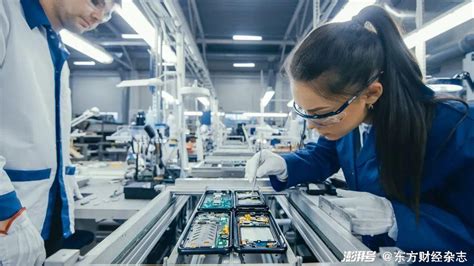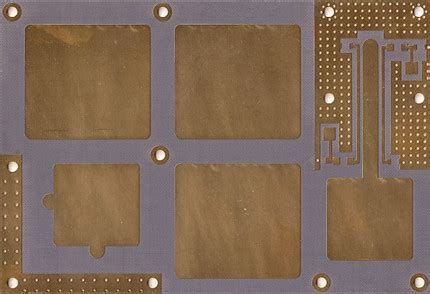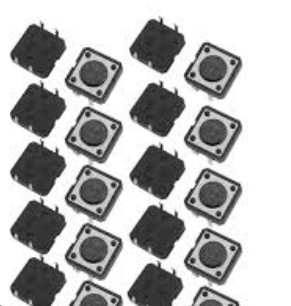Unlocking Efficiency: The Future of 4PCB Assembly Technology
Key Takeaways
The 4PCB assembly landscape is evolving, driven by a wave of technological advancements that are reshaping the electronics industry. This transformation is marked by several key innovations that enhance efficiency and optimize manufacturing processes. One notable development is the introduction of more sophisticated pcba equipment that streamlines workflows and enables faster production cycles. Moreover, the integration of smart technologies, such as artificial intelligence and machine learning, facilitates real-time monitoring and adjustments during the assembly process, leading to significant improvements in quality control. As manufacturers prioritize cost reduction, employing automated systems can mitigate labor expenses and minimize human error, creating a more cost-effective operational model. Additionally, innovations in materials science are contributing to enhanced product reliability; new substrates and soldering techniques ensure a longer lifespan for components while maintaining performance standards. Overall, these advancements are not just trends but essential strategies for organizations aiming to stay competitive in a rapidly evolving market. By embracing these changes in pcb assembly practices, companies can look forward to a future where efficiency and reliability go hand in hand, ultimately shaping better products for consumers.
Introduction to 4PCB Assembly Technology
The realm of 4PCB assembly has seen significant advancements that are reshaping the landscape of the electronics industry. Traditionally, pcba processes have involved labor-intensive techniques that often resulted in inconsistencies and inefficiencies. However, the integration of innovative technologies has introduced methods that not only streamline these processes but also enhance the overall quality of products. As manufacturers strive to meet the increasing demand for high-performance electronics, efficiency has become a primary driver in the evolution of 4PCB assembly practices. Modern techniques now utilize automation and advanced machine learning algorithms, which facilitate faster assembly times while maintaining precision. These innovations lead to reduced error rates, lower costs, and ultimately contribute to improved product reliability. As the industry continues to evolve, a clear understanding of these changes in pcb assembly technology will be crucial for companies aiming to stay competitive and responsive to market needs. The shift towards smarter practices in pcba signifies not only a technological transformation but also an opportunity for growth as we look toward a more efficient future in electronics manufacturing.
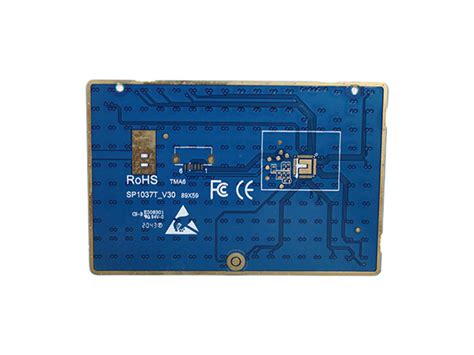
Key Advancements Driving Efficiency
The landscape of 4PCB assembly technology is undergoing significant transformations, driven by several key advancements aimed at enhancing overall efficiency in the electronics manufacturing sector. One promising development is the integration of advanced materials that optimize thermal management and signal integrity, which are essential for improving the performance of PCBA. Furthermore, the evolution of manufacturing techniques such as additive manufacturing and laser processing allows for greater precision and reduced material waste, ultimately lowering production costs.
Additionally, smart technologies incorporating Internet of Things (IoT) solutions are being employed to monitor real-time production metrics, identifying bottlenecks and inefficiencies as they arise. This data-driven approach enables manufacturers to make prompt adjustments, thereby enhancing throughput and quality.
“Embracing a culture of continuous improvement and innovation is crucial for staying competitive in the fast-paced electronics market.”
Moreover, automation plays a pivotal role in streamlining assembly processes by allowing robotic systems to perform repetitive tasks with remarkable speed and accuracy. This not only alleviates the human workload but also minimizes errors that can compromise the reliability of pcb assembly outcomes. As these advancements continue to emerge and mature, they will fundamentally reshape how manufacturers approach 4PCB assembly, driving a future characterized by enhanced operational efficiencies and higher product reliability.
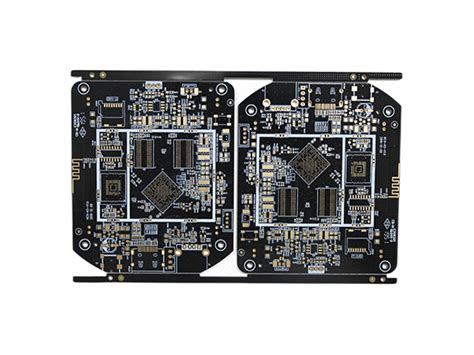
Cost Reduction Strategies in 4PCB Manufacturing
In the competitive landscape of electronics manufacturing, cost reduction in 4PCB assembly has become imperative for sustaining profitability. To achieve this, companies are increasingly shifting towards automated processes and utilizing advanced software solutions for design and production. One critical strategy involves optimizing the supply chain by fostering relationships with reliable suppliers, which can lead to bulk purchasing discounts and decreased material costs. Additionally, implementing lean manufacturing principles can systematically reduce waste throughout the pcba process.
| Cost Reduction Strategy | Description | Benefits |
|---|---|---|
| Automation of Production | Using machines to perform repetitive tasks | Increases efficiency & accuracy |
| Lean Manufacturing Techniques | Streamlining processes to eliminate waste | Reduces costs & improves lead times |
| Improved Supplier Collaboration | Building strong relationships with providers | Decreased material costs |
| Advanced Design Software | Utilizing software for optimal design | Enhances manufacturability |
Moreover, investing in research and development for innovative materials can lead to the adoption of lower-cost components that maintain or enhance product performance. By embracing these cost reduction strategies, manufacturers not only lower their operational expenditures but also position themselves to adapt quickly to market demands, ultimately driving enhanced productivity and reliability within their products. As the realm of 4PCB assembly evolves, a concerted focus on these strategies will be essential for businesses seeking to thrive in a rapidly changing industry landscape.
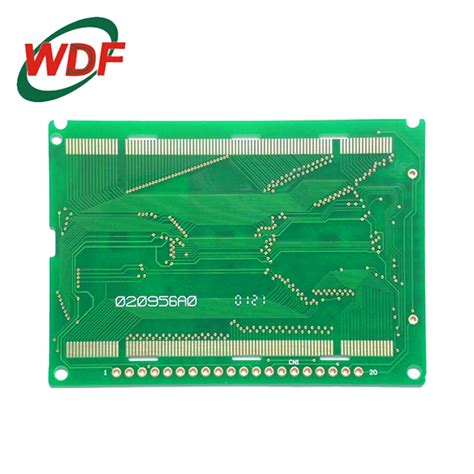
Enhancing Product Reliability through Innovation
In the realm of 4PCB assembly, innovations are driving significant advancements in improving product reliability. As the demand for compact, efficient, and high-performance electronics grows, pcb assembly techniques are evolving to meet these challenges. One of the critical innovations is the integration of advanced materials and processes that enhance both pcba durability and functionality. For example, the use of improved soldering techniques and materials reduces the risk of defects during assembly, ensuring that each unit meets stringent quality standards. Furthermore, automation plays a pivotal role; automated inspection systems can detect potential failures early in the manufacturing process, thus minimizing errors and enhancing product reliability. On top of that, better design methodologies focused on thermal management and stress distribution make newly designed pcba less prone to failure under operational conditions. Overall, these innovative approaches not only boost reliability but also contribute to sustainability, leading to longer product lifespans and greater customer satisfaction in a fiercely competitive market.
The Impact of Automation on 4PCB Processes
The advent of automation has significantly transformed 4PCB assembly processes, leading to enhanced efficiency and productivity in the electronics manufacturing sector. By integrating advanced robotics and artificial intelligence, companies are able to streamline pcba workflows, minimize human error, and accelerate production timelines. Automation not only optimizes the placement of components on printed circuit boards, but it also allows for real-time monitoring and quality control throughout the assembly process. This is crucial for ensuring that each unit meets the high standards expected in today’s competitive market. Furthermore, automated systems facilitate rapid prototyping and lower setup times, which is especially advantageous for manufacturers focusing on small-batch production or customized solutions. As a result, businesses can significantly reduce operational costs while maintaining or even enhancing the reliability of their products. The shift towards automation in pcb assembly processes exemplifies how technology is shaping the future of manufacturing by enabling companies to react swiftly to changing market demands without compromising quality or performance. Overall, the impact of automation on 4PCB processes underscores a pivotal shift towards a more innovative and efficient era in electronics production.
Case Studies of Successful 4PCB Implementations
In recent years, numerous companies have showcased the significant advantages of 4PCB assembly through innovative implementations. One prominent case is a leading telecommunications manufacturer that adopted pcba technology to streamline their production line. By integrating advanced automation and real-time monitoring systems, they achieved a remarkable reduction in manufacturing time and enhanced operational efficiency. Additionally, the company’s efforts to optimize their pcb assembly processes led to a notable decline in material waste, directly impacting their overall cost savings. Another example can be found in the automotive industry, where a major supplier implemented 4PCB assembly methods to produce critical electronic components. This shift not only improved product reliability but also enabled faster response times to market demands, allowing them to maintain a competitive edge. These case studies illustrate how companies are harnessing the potential of pcba technology, applying it effectively to meet evolving industry standards while realizing substantial benefits in efficiency and cost management. As these successful implementations demonstrate, embracing 4PCB assembly can be pivotal for businesses aiming to innovate and thrive in an increasingly competitive landscape.
Future Trends in 4PCB Assembly Technology
As 4PCB assembly technology continues to evolve, several future trends are set to shape its trajectory in the electronics industry. One significant trend is the integration of advanced materials that enhance the performance and efficiency of pcba processes. These new materials offer improved thermal conductivity and mechanical resilience, allowing for the creation of more compact and efficient electronic devices. In addition, innovative techniques such as additive manufacturing are being increasingly adopted within 4PCB assembly, enabling manufacturers to produce more complex geometries that were previously unattainable with traditional methods.
Furthermore, companies are increasingly adopting smart technologies to optimize their manufacturing processes. This includes the implementation of automation in assembly lines, where robotics and artificial intelligence play a critical role in enhancing precision and speed while reducing human error. The trend towards green manufacturing is also gaining momentum, as organizations seek to minimize waste and energy consumption throughout their pcba workflows. By prioritizing sustainability initiatives, manufacturers can not only cut costs but also meet the growing demand for environmentally friendly products. Ultimately, these innovations position 4PCB assembly technology at the forefront of a transformative phase in electronics manufacturing, promising greater efficiency, reliability, and cost-effectiveness in delivering high-quality electronic components.
Conclusion: Embracing the Future of Electronics Manufacturing
As we stand on the brink of a new era in electronics production, it is essential to recognize the transformative role of 4PCB assembly technology in enhancing the efficiency and reliability of manufacturing processes. With continual advancements in pcb assembly, manufacturers can achieve unprecedented levels of precision and speed, enabling them to meet burgeoning market demands while minimizing waste. The integration of automation and innovative techniques within pcba processes not only streamlines workflows but also increases output quality, fostering a competitive edge. This evolution is fueled by a commitment to reducing costs and enhancing product reliability, which are critical for long-term success in a rapidly changing marketplace. As innovations continue to unfold, embracing these technologies will be pivotal for companies seeking to thrive and redefine standards within the electronics industry. The future of 4PCB assembly is bright, marked by efficiency and reliability that will shape the next generation of electronic products.
Conclusion: Embracing the Future of Electronics Manufacturing
As we reflect on the advancements in 4PCB assembly technology, it becomes clear that the future of electronics manufacturing is being significantly reshaped. The revolutionary changes in pcba processes not only enhance efficiency but also foster an environment where cost reduction and product reliability are at the forefront. With innovations such as automated machinery and sophisticated design software, manufacturers can streamline their operations, reducing time-to-market for new products. The integration of smart technologies further brings about improved accuracy in pcb assembly, minimizing errors that can lead to costly reworks. As we move ahead, industries must embrace these technological advancements to remain competitive, ensuring that they leverage the benefits of improved efficiency and reliability in their production processes. Understanding and adapting to these trends will be crucial for sustaining growth and excellence in the rapidly evolving electronics landscape.
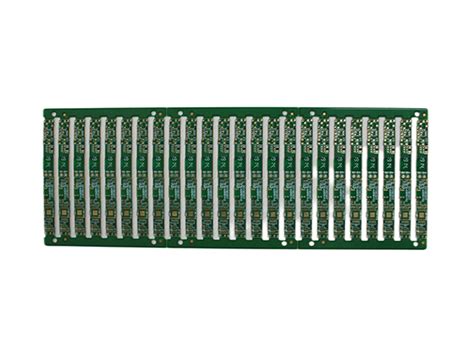
FAQs
What is 4PCB assembly and how does it differ from traditional PCB assembly?
4PCB assembly, or four-layer PCB assembly, involves the production of circuit boards with four layers of circuitry. This design enhances functionality and allows for the integration of more components in a smaller space compared to traditional single or double-layer board designs.
What are the key benefits of using 4PCB assembly in product design?
The primary benefits of 4PCB assembly include increased circuit density, improved performance, and enhanced reliability. These boards are capable of supporting more complex electronic designs while reducing size, leading to lighter and more compact devices.
How does automation influence 4PCB assembly processes?
Automation significantly enhances the efficiency of pcba processes by reducing human error, increasing processing speed, and enabling consistent quality control. Automated systems can quickly switch between different production tasks, streamlining operations and improving output.
What advancements in technology are currently shaping the future of 4PCB assembly?
Recent advancements such as 3D printing, sophisticated software for design simulation, and advanced materials are key factors shaping the future of 4PCB assembly. These innovations not only enhance design capabilities but also lead to faster prototyping and reduced material waste.
Can you provide examples of industries benefiting from improved pcba technology?
Industries such as consumer electronics, automotive, telecommunications, and healthcare benefit greatly from advances in pcba technology. These sectors require small-sized yet highly reliable components that can withstand demanding conditions while ensuring optimal performance.

